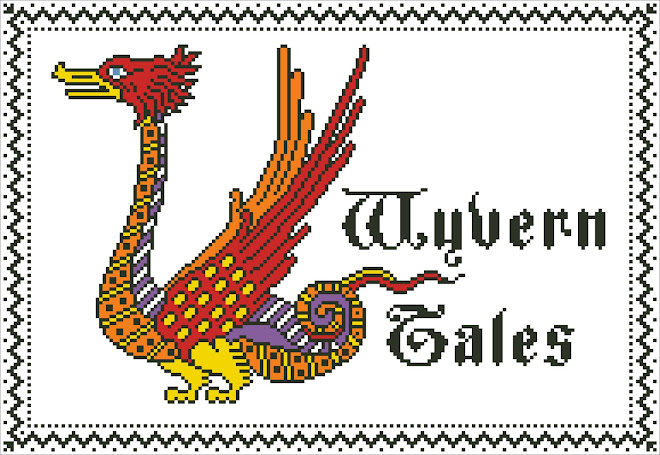The Mozarabic influence on Spanish illumination continued well into the 12th century. Wonderful architectural details of obvious Arabic origin can be found in manuscripts. This graceful double arch is adapted from the 12th-century "Cardena Beatus" (New York, Metropolitan Museum of Art). To see pictures from this manuscript, go to Cardeña Beatus.
And here are two of my favorite characters from the 12th-century "Silos Beatus" (London, British Library). Very early disco indeed! At least their clothing was not made out of polyester. To see pictures from this manuscript, go to Silos Beatus.
(Why this fellow is playing a bird is beyond me!)
By the 13th century, however, Spain had seen a political and cultural change that brought it into the fold of continental Christiandom. This is vividly depicted in manuscript pictures where drolleries, knights, minstrels, and other well-known medieval motifs now appear. Here are two sweet drolleries from the 13th/14th-century "Vidal Mayor", a collection of Spanish law texts (Los Angeles, J. Paul Getty Museum).
Alphonso X "El Sabio" (1221-1284), King of Leon and Castile, commissioned several well-known, stunning-illustrated manuscripts on such topics as songs and games which give us a brilliant view into 13th-century Spain. To see pictures from these manuscripts, go to The Cantigas de Santa Maria and Alphonso X Book of Games Home Page.
And finally, full-blown continental medieval Christianity appears in the form of the knight. But even this knight, from the 14th-century "Libro de la Confradia de Caballeros de La Luente" (Burgos, Archivo Municipal), still retains some of that exotic Mozarabic style we originally saw from six centuries earlier.
Tuesday, September 14, 2010
Subscribe to:
Posts (Atom)






